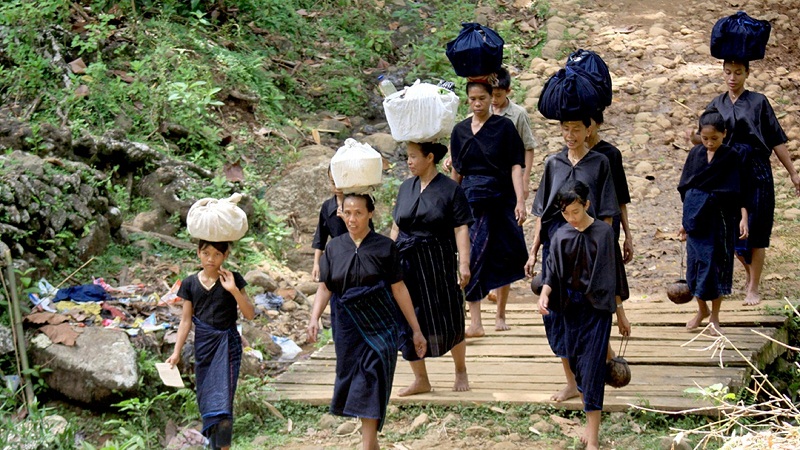Contents:
- Medical Video: Sickle cell anaemia Epidemiology
- Get to know thalassemia
- Thalassemia symptoms
- The risk of thalassemia in the Kajang and Bugis tribes
Medical Video: Sickle cell anaemia Epidemiology
Although it is still a rare disease, thalassemia is quite a lot in Indonesia. Indonesia still occupies one of the countries with the highest risk of thalassemia in the world. According to data collected by the World Health Organization or WHO, out of 100 Indonesians, there are 6 to 10 people who have genes that cause thalassemia in their bodies.
According to Chairman of the Indonesian Thalassemia Foundation, Ruswadi, quoted from Republika, until now thalassemia major patients who continue to need blood transfusions routinely have reached 7,238 patients. Of course, it's only based on data from hospitals. Beyond that, there could be some that are not recorded so that the number is greater.
According to Pustika Amalia Wahidayat, a doctor from the Hematology-Oncology Division of the Department of Child Health, University of Indonesia Medical School, quoted by Detik, countries in the Middle East, Mediterranean countries, Greece, and Indonesia are in the thalassemia belt area. This is what causes a large number of patients.
Still according to Pustika who was quoted from the Indonesian Pediatrician Association, this condition was seen not based on the number of existing patients. This is seen through the frequency of gene abnormalities found.
The highest province in Indonesia for thalassemia cases is the province of West Java and Central Java. However, there are several ethnic groups in Indonesia who are known to have a high risk of thalassemia, namely the Kajang and Bugis tribes.
Get to know thalassemia
Thalassemia is a genetic disease that is inherited through family blood. The gene mutations that occur make the body unable to produce the perfect form of hemoglobin. Hemoglobin which is located in red blood cells functions to carry oxygen. This causes the blood to be unable to carry oxygen properly.
The cause of thalassemia is caused by two types of proteins forming hemoglobin, namely alpha globin and beta globin. Based on these proteins, there are two types of thalassemia. The first is alpha thalassemia which occurs because alpha globin-forming genes are lost or mutated. The second is beta thalassemia which occurs when genes affect the production of beta globin proteins.
Usually, alpha thalassemia attacks many people in Southeast Asia, the Middle East, China, and Africa. While beta thalassemia is found in the Mediterranean region.
Thalassemia symptoms
Based on the appearance or absence of symptoms, thalassemia is divided into two, namely thalassemia major and thalassemia minor. Minor thalassemia is only a carrier of the thalassemia gene. Their red blood cells are smaller, but most of them have no symptoms.
Thalassemia major is thalassemia which will show certain symptoms. If the father and mother have the thalassemia gene, then their fetus is at risk of dying at the end of pregnancy.
But for those who managed to survive, they will suffer from anemia and constantly need blood transfusions to support the need for hemoglobin in the blood.
The following are common symptoms of thalassemia.
- Facial bone abnormalities
- Fatigue
- Growth failure
- Short breath
- Yellow skin
The best prevention for thalassemia is by screening while before marriage. If both partners carry the thalassemia gene, it is almost certain that one of their children will develop a major thalassemia and need to carry out a blood transfusion for the rest of their lives.
The risk of thalassemia in the Kajang and Bugis tribes
Indeed there are several ethnic groups in Indonesia that have a risk of beta thalassemia. The Kajang and Bugis tribes have a high potential. For those of you who come from the Kajang tribe and the Bugis tribe or have blood of their descendants, it never hurts to do thalassemia screening.
Research conducted by Dasril Daud and his team from the University of Hasanuddin Makassar in 2001 showed interesting findings. The study involved 1,725 tribal people in South Sulawesi and 959 people from other tribes in Indonesia such as Batak, Malay, Javanese, Bali, Sumba, and Papua. Found 19 people with beta thalassemia in the Bugis and Kajang tribes, but not found at all from other tribes.
In 2002 a study was also carried out and the result was a frequency of 4.2% for the carrier of the beta thalassemia gene.
According to Sangkot Marzuki in his book Tropical Disease: From Molecule to Bedside, based on the investigation found a mutation of the beta globin gene in the Bugis tribe that was not found at all in the Javanese population.
Why is the risk of high thalassemia occurring in the Kajang tribe? This could be related to the Kajang tribe's customs. The indigenous people of the Kajang tribe located in Bulukumba Regency, South Sulawesi, have binding customs to marry other people in the customary area. If not, they must live outside the customary area. Therefore, the father and mother of the same customary area are more likely to give birth to children with thalassemia. After that the child will later marry also with people who have similar conditions.
However, there is no further research on this matter. Experts continue to monitor and study the risk of thalassemia in these two tribes in Indonesia in order to be able to take preventive measures and effective treatment.












